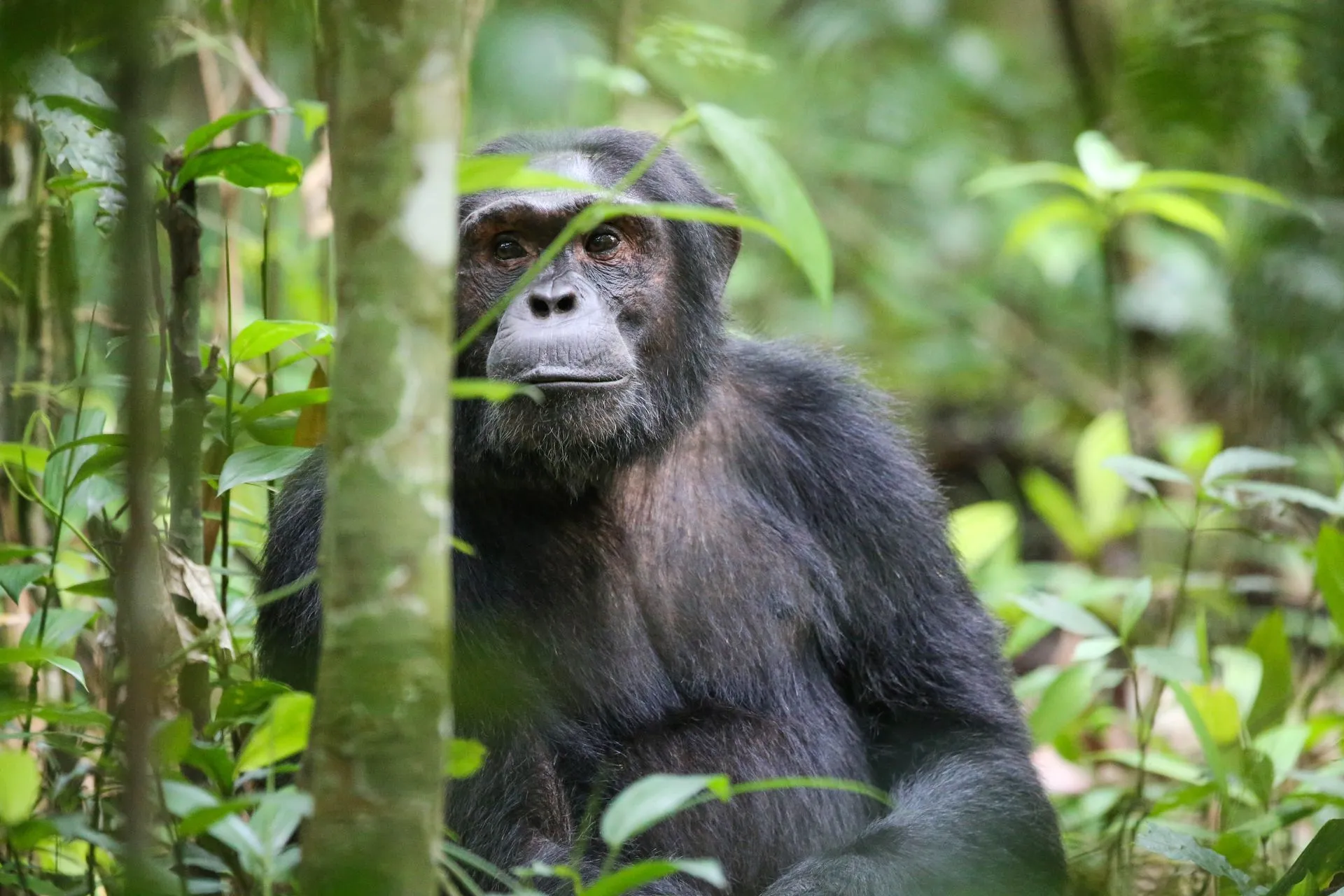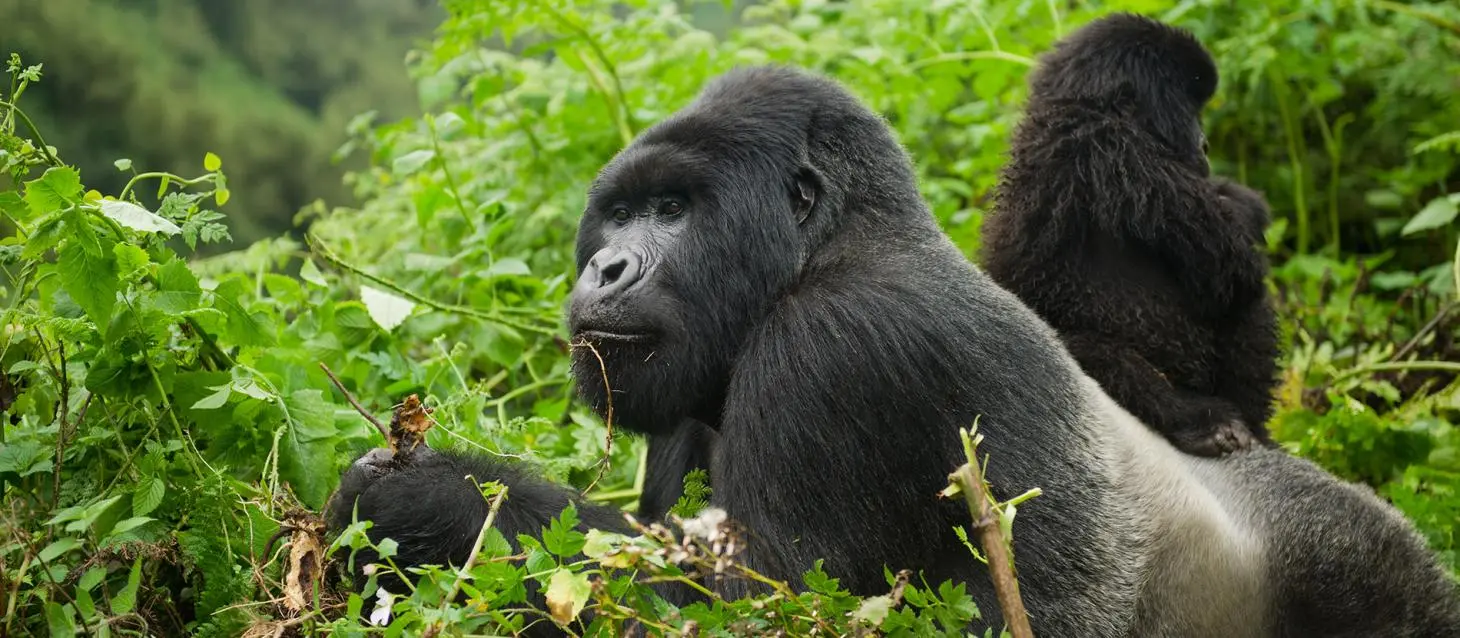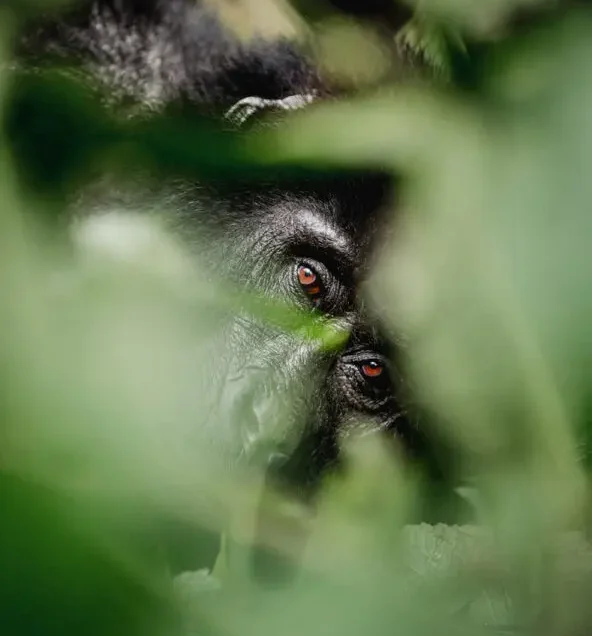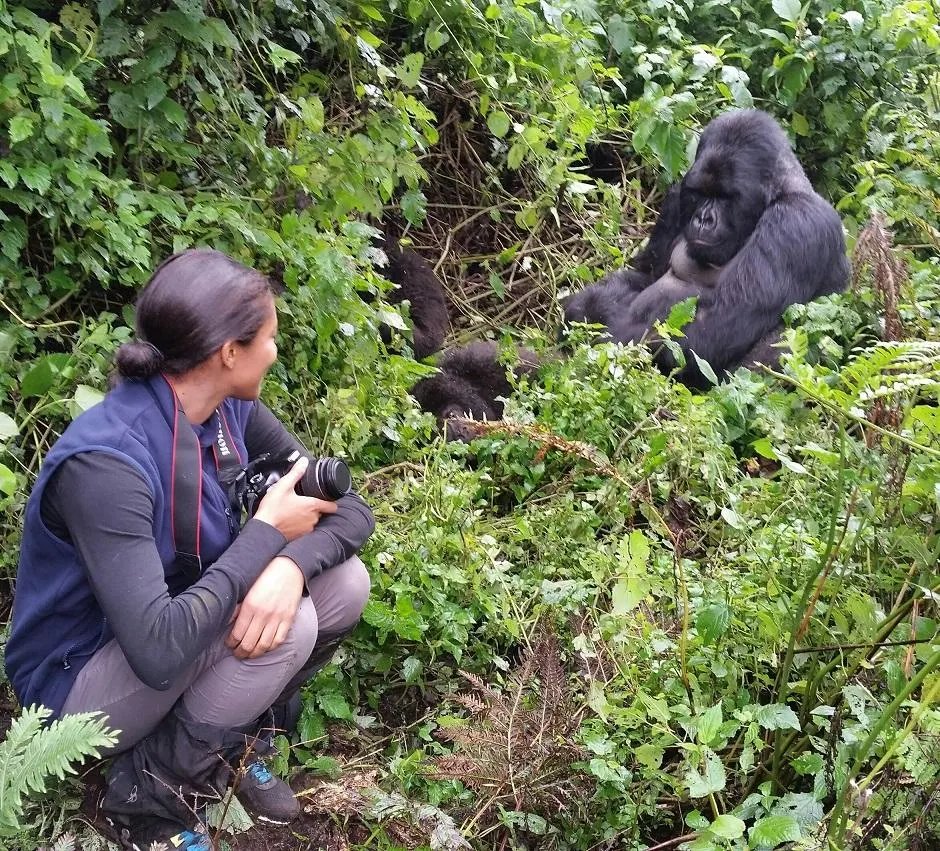The Primate Capital of The World
Kibale Forest National Park
Known as the “Primate Capital of the World,” Kibale is home to 13 different species of primates, including red colobus monkeys, red-tailed monkeys, black-and-white colobus monkeys, blue monkeys, olive baboons, and, most famously, chimpanzees. Seeing a community of wild chimpanzee is an unforgettable experience.
Their loud calls and hoots echo through the forest, and they can be seen swinging through the trees or foraging on the ground, moving with surprising ease and grace. The sight is unforgettable and offers a rare glimpse into the lives of our closest animal relatives. In addition to primates, Kibale is home to a wide range of other wildlife, such as forest elephants that move quietly between ancient trees and colorful birds that flit among the branches.
The forest itself feels ancient and alive, with tall trees, tangled roots, and moss-covered logs. The air is thick with the sounds of insects, and the ground is rich with the smells of damp earth. Trails wind through this dense forest, revealing hidden streams and swamps, offering the chance to discover something new with every step.
Reasons To Visit Kibale National Park

1. Chimpanzee Trekking
The main tourist attractions at Kibale National Park is chimpanzee trekking, where you go on a guided walk through the forest to find wild chimpanzee families. The park is famous for its chimpanzees that are used to humans, so you can get a close-up look at their behavior. Led by expert guides, you’ll walk along winding trails, ducking under vines as you search for the chimps.
The treks usually last about 2-3 hours, bringing you just a few meters away from these amazing apes. You’ll see them grooming each other, playing, hunting, and interacting, showing behaviors that are very similar to our own. It’s more than just a wildlife adventure—it’s a chance to connect with one of our closest genetic ancestors.
2. Chimpanzee Habituation
Unlike trekking, the chimpanzee habituation experience lets you spend half or an entire day with a chimpanzee group. The goal is to help the chimps get used to human presence.
You start early, following the chimps as they leave their nests and head to their feeding areas. This is adventure offers an opportunity to see their entire daily routine, from finding food to socializing. It’s a more natural and unpredictable experience, focused on patience and observation. You’ll also see how researchers track individual chimps, study their interactions, and build trust with these intelligent primates over time.b
3. Bird Watching
Kibale is home to over 370 bird species, making it a birdwatcher’s paradise. The forest canopy is full of color and movement as birds like the African pitta, green-breasted pitta, great blue turaco and different types of hornbills put on an exciting aerial show.
Birdwatching trails go through different habitats, from wetland edges to the tall trees of the rainforest. The best time to go is early in the morning when the forest is filled with the sounds of birds singing, tweeting, whistling, and cawing, turning the whole forest into a beautiful symphony.

4. Forest Night Walk
As night falls, Kibale changes into a completely different world. Night walks show you the creatures that come out after dark, like bush babies with big eyes, chameleons blending into the branches, and interesting insects. With the guide’s torchlight, you’ll explore the forest’s mysterious side, where the sounds grow louder, and the wildlife behaves in a whole new way.
5. Swamp Walk through Bigodi Wetland Sanctuary
Next to the Kibale National Park, the Bigodi Wetland Sanctuary is a community-run area full of diverse wildlife. A guided walk through the swamp takes you along wooden boardwalks, winding through papyrus reeds, palm trees, and orchids. It’s a more peaceful, relaxed experience compared to the forest, making it perfect for spotting birds like the great blue turaco. During the walk, you’ll also learn about local herbal plants and how the community helps care for this important ecosystem.
Kibale National Park Accommodation
There are plenty of accommodation options around Kibale to suit every style, from basic campsites to luxury lodges tucked away in the forest. Eco-lodges are especially popular, made from sustainable materials and featuring thatched roofs that blend into the environment. Many of these lodges have open dining areas where you can enjoy your meals while listening to the sounds of the forest at night. For a closer-to-nature experience, tented camps are available, with canvas tents set up on wooden platforms. Some of the best places to stay near Kibale National Park include Crater Safari Lodge, Kyaninga Lodge, Primate Lodge, Ndali Lodge, Kibale Forest Lodge, Kibale Lodge, Chimpanzee Forest Lodge, Turaco Treetops Lodge, Mountain of the Moon Hotel, Isunga Lodge, Papaya Lodge, Chimpundu Lodge, Kluges Guest Farm, and Tinker’s Homestead.

More Articles
Our Trusted Partners







